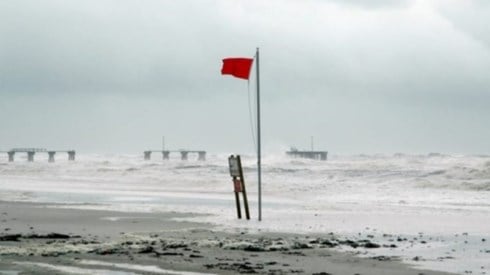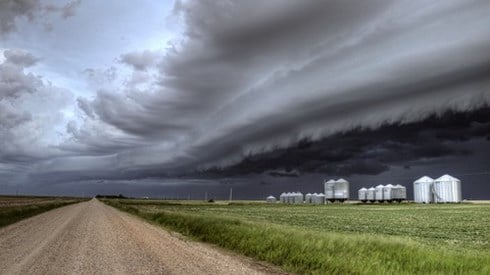Natural Catastrophe Losses Top Averages through First 3 Quarters
![]()
October 23, 2023
![]()
Insured losses resulting from natural disasters during the first 3 quarters of 2023 were estimated at more than $88 billion, with the number of billion-dollar natural catastrophes expected to set a record this year, according to a new report from Aon.
In its Q3 Global Catastrophe Recap, Aon says that economic losses from this year's natural catastrophes exceeded $295 billion, nearing the twenty-first century annual average of $310 billion. The twenty-first century average for economic losses through a year's first three quarters is $265 billion, Aon says.
With more than 75,000 deaths resulting from natural disasters already this year, 2023 ranks as the deadliest year since 2010, Aon says.
The costliest event of the third quarter was flooding in Beijing and several Chinese provinces, the October 19, 2023, Aon report says. Meanwhile, insured losses from severe convective storms in the United States continued to increase, topping $50 billion for the first time ever, according to Aon, representing 60 percent of total global insured losses for the year to date.
Aon cited the wildfire that destroyed the town of Lahaina in Hawaii as another significant loss event for the industry during the third quarter. That event also underscored the fact that the wildfire peril isn't limited to California, the report says.
According to the report, the current estimate is that by the end of September there were at least 47 individual billion-dollar disasters worldwide, the fifth-highest number ever on a price-inflated basis.
Disaster costs continue to be affected by macroeconomic factors and continued inflation, the Aon report notes.
Among the significant third-quarter loss events, the aforementioned August floods in China caused more than $30 billion in economic losses, Aon says. Meanwhile, the Hawaii wildfires caused $6.0 billion in economic losses. Severe convective storms in Italy and elsewhere in Europe in July resulted in an estimated $4.3 billion in economic losses, the report says.
On a regional basis, Europe, the Middle East, and Africa (EMEA) accounted for the largest portion of the first three quarters' economic losses from natural catastrophes with a current estimate of $134 billion, Aon says. Significant earthquakes were the primary driver of those losses, according to the report.
While economic losses in the Asia-Pacific region were lower than average through the first three quarters of 2023, losses in the Americas were close to the median.
The $88 billion in global insured losses from natural disasters during the first three quarters was higher than the average of $75 billion and the median of $62 billion for the period, Aon says. For the year, it's likely that 2023 insured losses will surpass the yearly average of $89 billion, according to the report.
The 32 billion-dollar insured loss events through the first three quarters of 2023 set the highest annual total on record, Aon says. That total was driven largely by severe convective storm activity in the United States, which resulted in 21 individual billion-dollar insured loss events during the year's first 9 months.
Indeed, severe convective storm events in the United States dominated the list of the top 10 costliest natural catastrophe insured losses during this year's first three quarters, Aon says. While the February earthquakes in Turkey and Syria topped the list with $5.7 billion in insured losses, US severe convective storms held 8 of the remaining 9 spots on the top 10 through September, with insured losses ranging from $2.3 billion to $5.0 billion.
The other entry in the group was the Hawaii wildfires, ranking seventh with an estimated $3.0 billion in insured losses. That event was expected to rank among the eight costliest wildfires ever, Aon says.
Natural disasters in the United States were responsible for roughly 75 percent of global insured losses during the first 3 quarters of 2023 at approximately $65 billion, the Aon report says. That figure already exceeds the long-term annual average and median for US insured natural disaster losses, the report says.
"While EMEA recorded the highest economic losses, the portion of that total that was covered by insurance was significantly lower than in the United States, owing to a large protection gap for major events, including earthquakes, floods, and droughts," the Aon report says.
The Aon report says that while the overall proportion of economic losses covered by insurance was near the long-term average, the contributions from individual regions and perils varied from the norm.
While tropical cyclone and flooding events typically are responsible for the largest portion of economic losses through a year's third quarter, in 2023 earthquakes and severe convective storms were responsible for more than 60 percent of economic losses through the first 3 quarters.
"Severe Convective Storms caused approximately 70 percent of global insured losses in 2023, compared to an average of 34 percent," the Aon report says.
Commenting on the impact of severe convective storms on natural catastrophe losses through the third quarter, the Aon report notes that this year marks the first time total insured losses resulting from severe convective storms in the United States are expected to exceed $50 billion. In the third quarter alone, there were four and potentially seven billion-dollar US severe convective storm disasters, Aon says.
"The month of July had the most local storm reports of any month in 2023, with over 1,200 more reports than the next month," the Aon report says. "Severe wind was the largest storm report category, with reports concentrated over the Great Plains and eastern US."
Severe convective storms were an issue in Europe as well, Aon says. In particular, hailstorm activity in northern Italy throughout July resulted in record insurance payouts for the country.
The Aon report notes that US hurricane losses were lower than average during this year's third quarter, typically considered the peak of the Atlantic and Pacific hurricane seasons. Still, two systems, Hilary and Idalia, caused significant losses, together reaching into the billions of dollars, Aon says.
October 23, 2023






